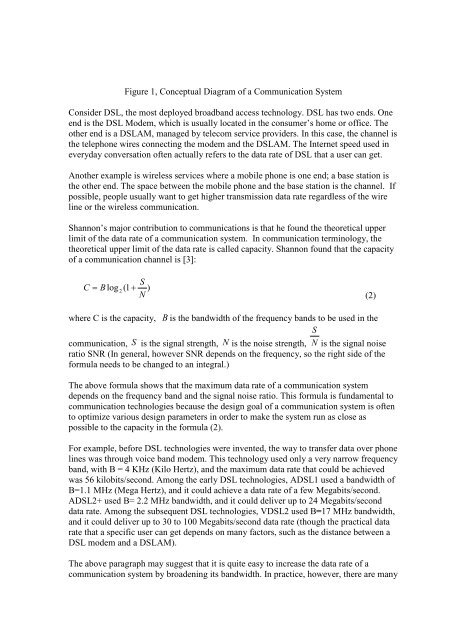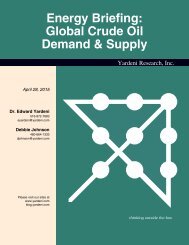Financial Signal Processing, Bubble Detection, Reflection Detection
Financial Signal Processing, Bubble Detection, Reflection Detection
Financial Signal Processing, Bubble Detection, Reflection Detection
You also want an ePaper? Increase the reach of your titles
YUMPU automatically turns print PDFs into web optimized ePapers that Google loves.
Figure 1, Conceptual Diagram of a Communication System<br />
Consider DSL, the most deployed broadband access technology. DSL has two ends. One<br />
end is the DSL Modem, which is usually located in the consumer’s home or office. The<br />
other end is a DSLAM, managed by telecom service providers. In this case, the channel is<br />
the telephone wires connecting the modem and the DSLAM. The Internet speed used in<br />
everyday conversation often actually refers to the data rate of DSL that a user can get.<br />
Another example is wireless services where a mobile phone is one end; a base station is<br />
the other end. The space between the mobile phone and the base station is the channel. If<br />
possible, people usually want to get higher transmission data rate regardless of the wire<br />
line or the wireless communication.<br />
Shannon’s major contribution to communications is that he found the theoretical upper<br />
limit of the data rate of a communication system. In communication terminology, the<br />
theoretical upper limit of the data rate is called capacity. Shannon found that the capacity<br />
of a communication channel is [3]:<br />
C = B log 2<br />
(1 +<br />
S<br />
N<br />
)<br />
(2)<br />
where C is the capacity, B is the bandwidth of the frequency bands to be used in the<br />
S<br />
communication, S is the signal strength, N is the noise strength, N is the signal noise<br />
ratio SNR (In general, however SNR depends on the frequency, so the right side of the<br />
formula needs to be changed to an integral.)<br />
The above formula shows that the maximum data rate of a communication system<br />
depends on the frequency band and the signal noise ratio. This formula is fundamental to<br />
communication technologies because the design goal of a communication system is often<br />
to optimize various design parameters in order to make the system run as close as<br />
possible to the capacity in the formula (2).<br />
For example, before DSL technologies were invented, the way to transfer data over phone<br />
lines was through voice band modem. This technology used only a very narrow frequency<br />
band, with B = 4 KHz (Kilo Hertz), and the maximum data rate that could be achieved<br />
was 56 kilobits/second. Among the early DSL technologies, ADSL1 used a bandwidth of<br />
B=1.1 MHz (Mega Hertz), and it could achieve a data rate of a few Megabits/second.<br />
ADSL2+ used B= 2.2 MHz bandwidth, and it could deliver up to 24 Megabits/second<br />
data rate. Among the subsequent DSL technologies, VDSL2 used B=17 MHz bandwidth,<br />
and it could deliver up to 30 to 100 Megabits/second data rate (though the practical data<br />
rate that a specific user can get depends on many factors, such as the distance between a<br />
DSL modem and a DSLAM).<br />
The above paragraph may suggest that it is quite easy to increase the data rate of a<br />
communication system by broadening its bandwidth. In practice, however, there are many



